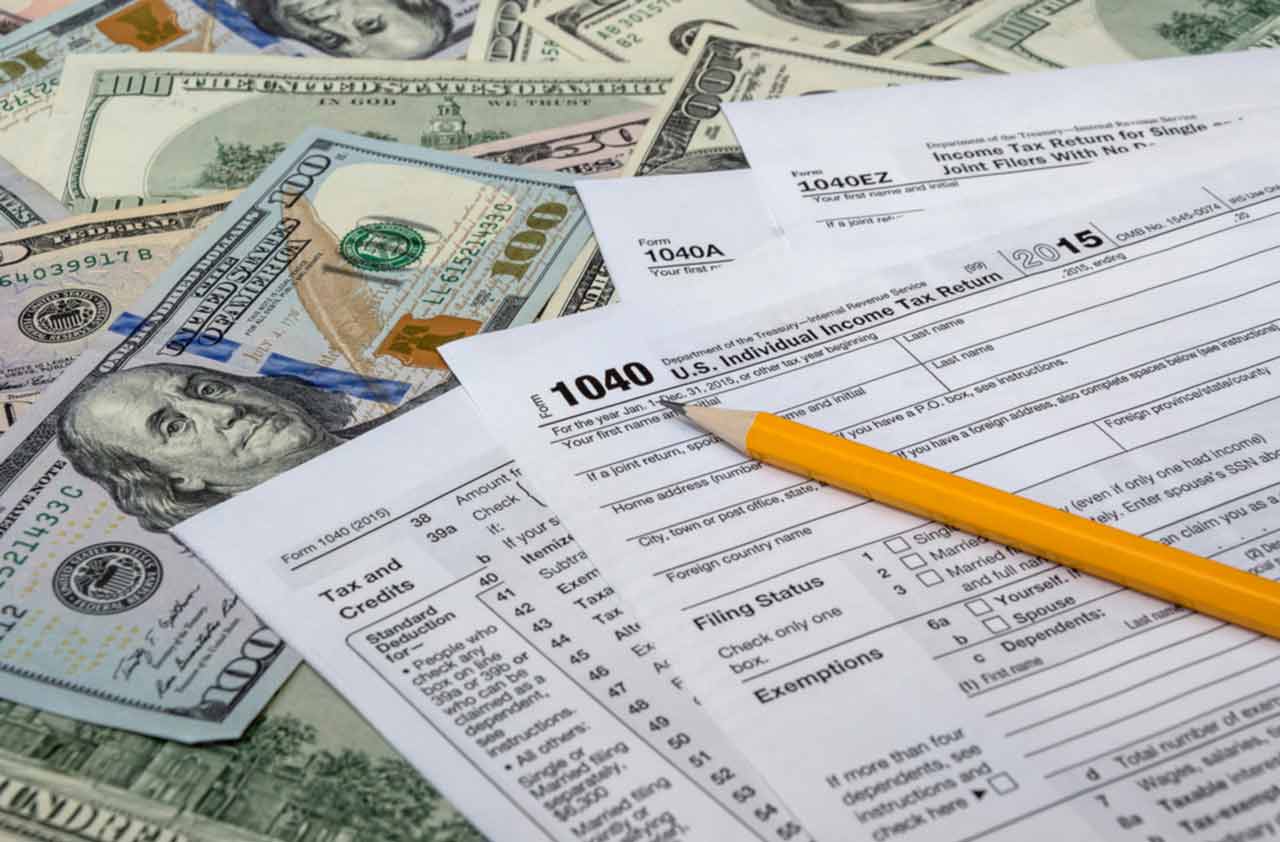Your 401(k), 403(b) and IRA: Tax Shelter or Tax Nightmare?
You've saved like crazy in your tax-deferred accounts, but all that money isn't really yours: Some of it belongs to Uncle Sam, and in the future he may be hungry for more. Here are two strategies to curb your future tax bill.


When it comes to taxes, our goal is to keep it in the family. And I know that Uncle Sam looks like a nice guy, but he just isn’t part of your family.
You don’t have to go very far back into the history of our country to find tax rates that were easily double what they are today.
For example, during the last two years of World War II, the highest marginal tax bracket was 94%. Throughout much of the 1960s, it was between 70% and 90%.

Sign up for Kiplinger’s Free E-Newsletters
Profit and prosper with the best of expert advice on investing, taxes, retirement, personal finance and more - straight to your e-mail.
Profit and prosper with the best of expert advice - straight to your e-mail.
Pressure Mounts to Raise Taxes in Future
What was true of the past might be true for the future. Today, the top marginal rate is 39.6%, and if you add the 3.8% percent surtax on investment income, you are at 43.4%.
Let’s look at the fiscal challenges facing our country.
As of 2016, the majority of every tax dollar that comes into the U.S. Treasury goes to pay for only four things: Social Security, Medicare, Medicaid and interest on the national debt.
As Baby Boomers march into retirement and onto the rolls of the entitlement programs over the course of the next 10 years, they are going to stop putting money into Social Security and Medicare; they are going to want to start taking money out. As they do, the costs for these four big ticket items will balloon.
By looking back at the last several years, we can already see the percentage of tax dollars going to Medicare and Medicaid rise. In 2016, 29.1% of every tax dollar went to cover health programs (including both Medicare and Medicaid) compared with only 20% of every tax dollar in 2012. This is the only category that has seen a significant increase every year for the last five years. This means there are fewer of our tax dollars to pay for everything else, including disaster relief, the IRS, the armed services, basic welfare programs like food stamps, the EPA, Centers for Disease Control, the cost of running Congress, the FBI, the CIA and dozens of other programs.
When 2020 rolls around, where will the government go to find the money to pay all its bills? I don’t have a crystal ball, but you can guess where the tax rates are likely to go from here.
How Tax-Deferred Savings Can Catch Up with You
In my experience, most retirees and pre-retirees have the majority of their savings in 401(k) and individual retirement accounts, or IRAs. Traditional versions of these accounts may have never paid taxes. If you’re one of those people with the majority of your savings in one of those retirement accounts, you need to realize not all that money is yours. You have a partner in your accounts, Uncle Sam, who with a stroke of a pen can increase his share and reduce yours.
On top of it, there are a few other things that the withdrawals from your 401(k), 403(b) and IRA accounts can impact:
- Uncle Sam is going to tax every dollar that comes out at whatever your highest tax bracket is.
- Each distribution can potentially push you into the higher tax bracket.
- Every dollar you withdraw has the potential to increase a tax you pay on your Social Security.
- Each distribution can increase your exposure to the 3.8% surtax on investment income.
- You might have to include more of your Social Security benefits as taxable income, and your Medicare Part B premiums can increase.
- These tax-deferred accounts are the only assets that force you to withdraw money, even if you don’t want to: Required minimum distributions, or RMDs, start at age 70½. Failing to take your RMD can trigger a 50% tax on those funds.
One Tax-Reduction Strategy: Roth IRA Conversion
One of the strategies to potentially reduce the impact of taxes is a Roth IRA conversion. By converting to a Roth IRA, you may help protect your savings from a potential tax increase in the future, by paying tax at today’s known rates.
Also, since Roth IRA distributions in retirement are tax-free (as long as you’re at least 59½ and have held your Roth account for at least five years) they typically don’t impact other things tied to your income. For instance, tax-free Roth IRA distributions are not part of the calculation that determines how much of your Social Security income is taxable, so they can help to reduce that expense. They can also help you keep other costs tied to your income lower, such as your Medicare Part B premiums or health insurance subsidies.
Another big benefit is that Roth IRAs have no required minimum distributions during your lifetime.
So, during your retirement, you can take as much, or as little, as you want. You’re not forced to take anything at 70½ if you don’t want to, like you are with your traditional IRAs or 401(k) plans.
That means your Roth IRA can continue to grow, tax-free, for your heirs. That makes the Roth IRA a very good vehicle from an estate-planning perspective.
And, speaking of your beneficiaries, non-spouse beneficiaries, like children, do have RMDs from inherited Roth IRA accounts after the owner dies, but those distributions will generally be tax-free as well.
Another Strategy: Filling Up the Bracket
One of the strategies that some might consider as they ease into retirement is a Roth IRA strategy called “filling up the bracket,” where you focus on timing your Roth conversions with your tax bracket in mind.
Here is an example. Let’s assume we have a couple, still working, and planning to retire in two years. While they are working, the combined household income is $120,000 annually. Their effective tax rate is 14%. In two years, they will reach age 66 and retire.
Since they have no debt, they have calculated that, in retirement, they will need $55,000 per year on which to live. They are expecting $30,000 from Social Security and about $25,000 from IRA accounts for a total $55,000. From the time they retire at age 66 and until they reach age 70½, (when they have to begin taking their RMDs), our hypothetical couple will find themselves in a much lower tax bracket.
At this point, it makes sense for them to sit down with the qualified tax professional and review a few options for converting portions of their IRA and 401(k) accounts into a Roth IRA while in the lower tax bracket.
These kinds of tax-reduction techniques should be and are a very important part of your overall retirement plan. Your financial professional should be discussing this with you. This is your financial professional’s job, to create a written plan for you and to help guide you on the path toward your retirement.
Before considering a Roth IRA conversion, please consult with a qualified tax professional.
Get Kiplinger Today newsletter — free
Profit and prosper with the best of Kiplinger's advice on investing, taxes, retirement, personal finance and much more. Delivered daily. Enter your email in the box and click Sign Me Up.

Daniel Shub is the founder of OCTO Capital and Shub & Company. Since 1997, he has worked in the financial services industry, specifically focusing on clients' goals and wealth protection for retirement. He also authored the book, Retirement IQ. Shub holds the Registered Financial Consultant® designation, has passed the Series 65 securities exam and is insurance licensed.
-
 Stock Market Today: Great Power Affairs Mesmerize Markets
Stock Market Today: Great Power Affairs Mesmerize MarketsThe U.S. and China are at least talking about talking about tariffs, and investors, traders and speculators are showing a little less fear.
By David Dittman
-
 Is Walmart Plus Worth It?
Is Walmart Plus Worth It?There are tons of exciting Walmart Plus benefits – but are they worth the $98 annual fee?
By Rachael Green
-
 Ask the Editor: Reader Questions, April 25 — 529 plans
Ask the Editor: Reader Questions, April 25 — 529 plansIn our latest Ask the Editor round-up, Joy Taylor, The Kiplinger Tax Letter Editor, answers questions related to 529 plans.
By Joy Taylor
-
 Three Options for Retirees With Concentrated Stock Positions
Three Options for Retirees With Concentrated Stock PositionsIf a significant chunk of your portfolio is tied up in a single stock, you'll need to make sure it won't disrupt your retirement and legacy goals. Here's how.
By Evan T. Beach, CFP®, AWMA®
-
 Four Reasons It May Be Time to Shop for New Insurance
Four Reasons It May Be Time to Shop for New InsuranceYou may be unhappy with your insurance for any number of reasons, so once you've decided to shop, what is appropriate (or inappropriate) timing?
By Karl Susman, CPCU, LUTCF, CIC, CSFP, CFS, CPIA, AAI-M, PLCS
-
 Before You Invest Like a Politician, Consider This Dilemma
Before You Invest Like a Politician, Consider This DilemmaAs apps that track congressional stock trading become more popular, investors need to take into consideration some caveats.
By Ryan K. Snover, Investment Adviser Representative
-
 How to Put Together Your Personal Net Worth Statement
How to Put Together Your Personal Net Worth StatementNow that tax season is over for most of us, it's the perfect time to organize your assets and liabilities to assess your financial wellness.
By Denise McClain, JD, CPA
-
 Bouncing Back: New Tunes for Millennials Trying to Make It
Bouncing Back: New Tunes for Millennials Trying to Make ItAdele's mournful melodies kick off this generation's financial playlist, but with the right plan, Millennials can finish strong.
By Alvina Lo
-
 Early-Stage Startup Deals: How Do Convertible Notes Work?
Early-Stage Startup Deals: How Do Convertible Notes Work?Some angel investors support early startups by providing a loan in exchange for a convertible note, which includes annual interest and a maturity date.
By Murat Abdrakhmanov
-
 Trump’s Tax Cut Risks Your SNAP, Medicaid Benefits
Trump’s Tax Cut Risks Your SNAP, Medicaid BenefitsTax Cuts The GOP budget blueprint could slash lifesaving programs for millions of U.S. households.
By Gabriella Cruz-Martínez